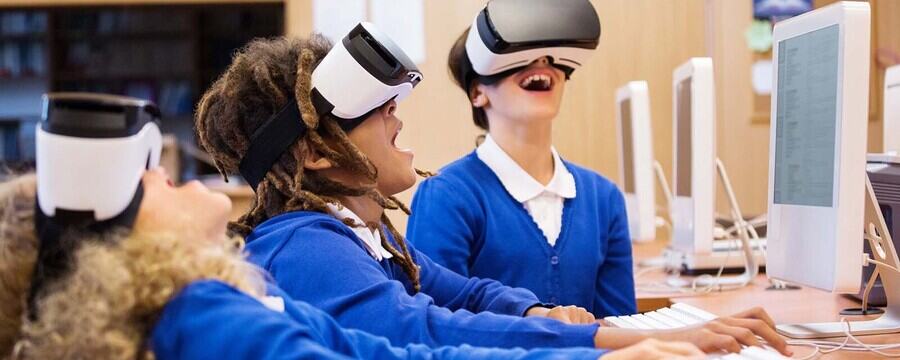What can videogames teach us about learning?

When the American linguist and researcher, James Gee, wrote ‘What Video Games Have to Teach Us about Learning and Literacy’ (2003), Sony’s PlayStation 2, Microsoft’s XBOX, and Nintendo’s GameCube were the three most popular video game consoles on the market. There were no Playstation VR headsets; no XBOX ‘Kinect’; and perhaps most upsettingly of all, no Wii Sports!
As someone reading Gee’s book two decades later, you might be wondering: what could a book, written before Minecraft was even a thing, possibly tell me about video games today?
Surprisingly, a lot of what James Gee had to say in the early 2000s was just as relevant then as it is today. In particular, the question of whether or not video games are a “waste of time” – the subject of the second chapter of Gee’s book – continues to dominate academic journal articles and public discussion boards alike.
Is playing video games a “waste of time”?
Not so, according to Gee! Whilst “older people” – particularly those “who don’t play video games” – might see video games as a waste of time, it was Gee’s six-year-old child who proved to him otherwise (2003: 19). Here, Gee describes his experience of watching his son play the strategy/puzzle game, Pikmin:
It is quite a sight to watch a six-year-old, as Captain Olimar, lead a multi-colored army of little Pikmin to fight, build, grow more Pikmin, and explore a strange landscape, all the while solving multiple problems to discover and get to the locations of the spaceship’s missing parts. The child then orders his Pikmin to carry the heavy parts back to the ship. (Gee, 2003: 20)
An alternative perspective on learning and knowing
- Learning to experience (see and act on) the world in a new way
- Gaining the potential to join and collaborate with a new affinity group
- Developing resources for future learning and problem solving in the semiotic domains to which the game is related
- Learning how to think about semiotic domains as design spaces that engage and manipulate people in certain ways and, in turn, help create certain relationships in society among people and groups and people, some of which have important implications for social justice (Gee 2003: 45-46)
What are the implications for contemporary teachers?
- The internal design of the game itself
“Good games – and the games get better in this respect all the time – are crafted in ways that encourage and facilitate active and critical learning and thinking (which is not to say that every player will take up this offer)” (Gee, 2003: 46) - The people around the learner (i.e. other players and nonplayers)
“If these people encourage reflective metatalk, thinking, and actions in regard to the design of the game, of video games more generally, and of other semiotic domains and their complex interrelationships, then this, too, can encourage and facilitate active and critical learning and thinking (though, again, the offer may not be taken up)” (Gee, 2003: 46-47) - Does the learning in the video game facilitate learning in another domain?
In other words, when “mastering the meaning-making skills in, and taking on the identity associated with, the precursor domain facilitates learning in the other domain” (Gee, 2003: 47)
Conclusion
I originally tried to play his computer games so I could teach him how to play them, but in the end, things worked out just the reverse and he taught me how to play. More, he taught me to take learning and playing games seriously, all the while having fun. (Gee, 2003)
Ryan Bramley
References
Gee, James P. (2003). What Video Games Have to Teach Us about Learning and Literacy. New York: Palgrave Macmillan.
Share this
Teaching Digital Literacy: Videogames in Education

Teaching Digital Literacy: Videogames in Education


Reach your personal and professional goals
Unlock access to hundreds of expert online courses and degrees from top universities and educators to gain accredited qualifications and professional CV-building certificates.
Join over 18 million learners to launch, switch or build upon your career, all at your own pace, across a wide range of topic areas.
Register to receive updates
-
Create an account to receive our newsletter, course recommendations and promotions.
Register for free







